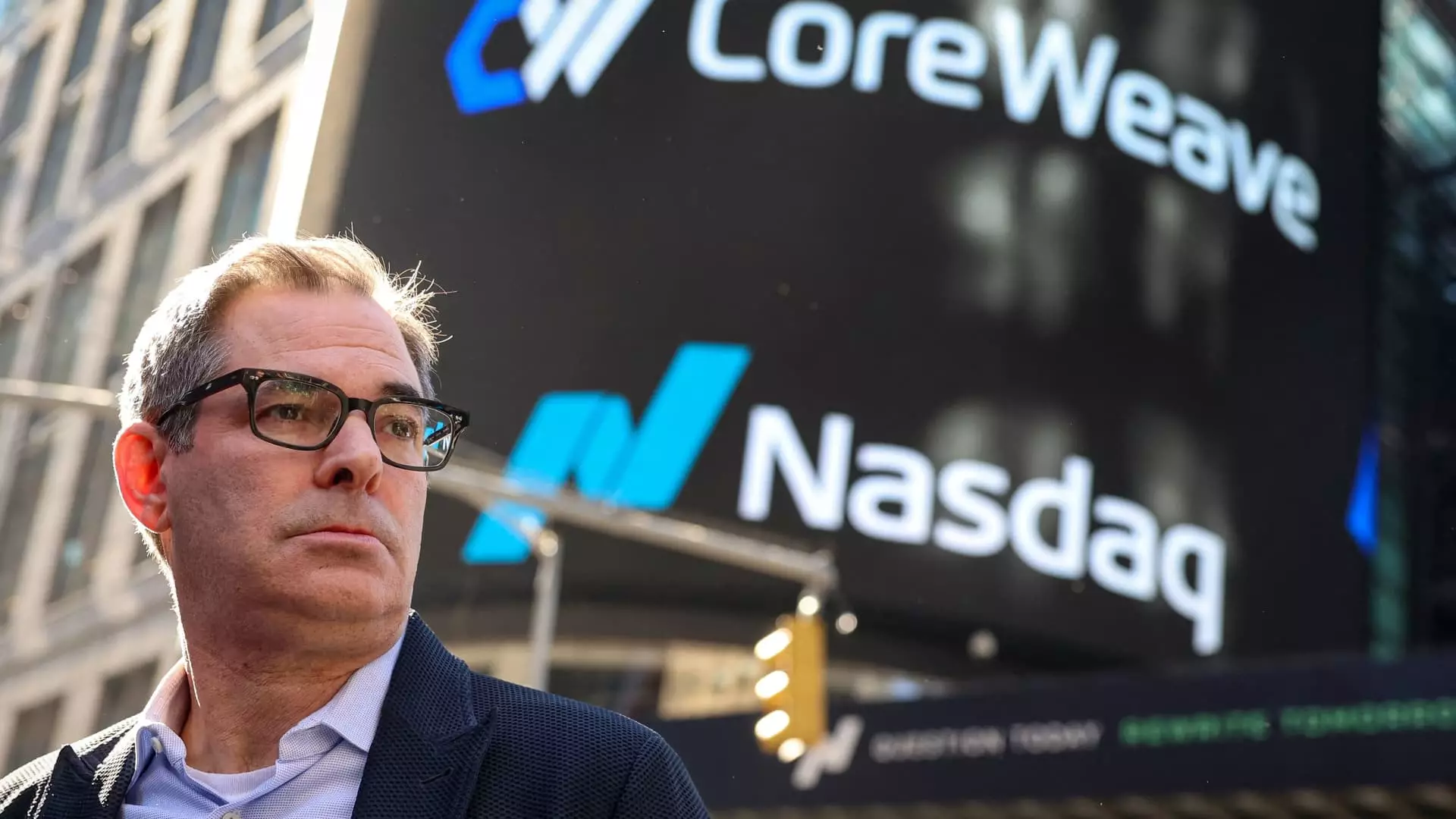CoreWeave’s share prices appeared stagnant as new earnings were reported, yet the story beneath those numbers reveals a business straddling the line between exuberant potential and precarious instability. Recently, the company posted remarkable revenues shortly after its market debut in March, but there is an unmistakable tension simmering on the surface. CEO Michael Intrator, with a resolute stance on growth, has signaled an expected capital expenditure in the realm of $20 billion to $23 billion, far exceeding analysts’ more cautious predictions of $4.61 billion. While optimistic projections often energize stockholders, they also raise alarm bells about the underlying sustainability of such growth amid rising debt loads.
When Intrator discussed the capital expenditure surge during interviews, it became clear that the company is operating at the behest of soaring demand from clients seeking AI infrastructure. There’s a certain bravado in this strategy, a willingness to lean into the high-stakes world of AI services. But that bravado obscures a crucial question: is this hyper-focus on expansion sustainable, or is it paving the way to a financial quarry with deep pitfalls?
The Double-Edged Sword of Demand
CoreWeave’s narrative intertwines success with financial risk in a particularly disconcerting way. It has captivated major industry players, securing significant contracts with the likes of Microsoft, Nvidia, and, notably, OpenAI — which alone committed to nearly $12 billion in a five-year deal. This is impressive and, on the surface, indicative of a company making swift, calculated moves in the rapidly evolving AI landscape.
However, a deeper dive reveals that their infrastructure’s reliance on renting out AI servers powered by Nvidia chips is fraught with volatility. As demand fluctuates in technology cycles, CoreWeave’s model may not be as robust as it appears. Wall Street analysts have already voiced concerns regarding the company’s growing debt, highlighted by DA Davidson’s downgrade on CoreWeave’s shares due to fears over whether this business model warrants scaling. Their expectation that sustainability hinges on short-term demand raises serious questions about the company’s long-term viability.
Debt: The Elephant in the Room
The specter of debt looms large over CoreWeave, posing a direct challenge to its growth narrative. While Intrator assures stakeholders of strong financing and repayment capabilities, the numbers paint a more unsettling picture. A substantial net loss of $314.6 million, exacerbated by stock-based compensation linked to its IPO, complicates the dialogue around financial health. Analysts like Gil Luria have observed that offering a 5% return on assets while facing a staggering 12.5% interest rate creates an untenable situation for investors. They ponder whether this “overflow capacity” model can sustain itself or only further entrench the company within a cycle of increasing debt.
Intrator’s assertions of solid financing suggest that lenders have confidence in CoreWeave’s long-term prospects. However, reliance on continuous inflows of capital under fluctuating demand faces the risk of capital destruction — a gamble that could prove disastrous if market conditions shift unfavorably. Is CoreWeave merely riding the wave of technological enthusiasm, or is it building a lasting foundation?
The Metrics That Matter
While CoreWeave exhibits prominent growth metrics — forecasting revenues as high as $5.1 billion and a stunning 363% growth trajectory — these numbers are tempered by the reality of its financial losses and debt accumulation. Positive forecasts around revenue backlog and remaining performance obligations suggest a robust operational framework; yet, analysts remain skeptical. A 420% increase in revenue is significant, but it can’t overshadow the net losses that raise more questions than answers. Is it truly growth if it comes with such substantial costs?
In the unpredictable realm of artificial intelligence, businesses like CoreWeave are forced to adapt rapidly or risk obsolescence. But this rush for dominance with heavy reliance on external capital could be a strategy that leads to eventual downfall.
At its core, the narrative surrounding CoreWeave exemplifies the delicate interplay of promise and peril in the tech sector. It serves not only as a study in ambition but as a cautionary tale against overextending into the unknown, for in the world of finance, growth that isn’t grounded in stability can just as easily lead to collapse.

Leave a Reply